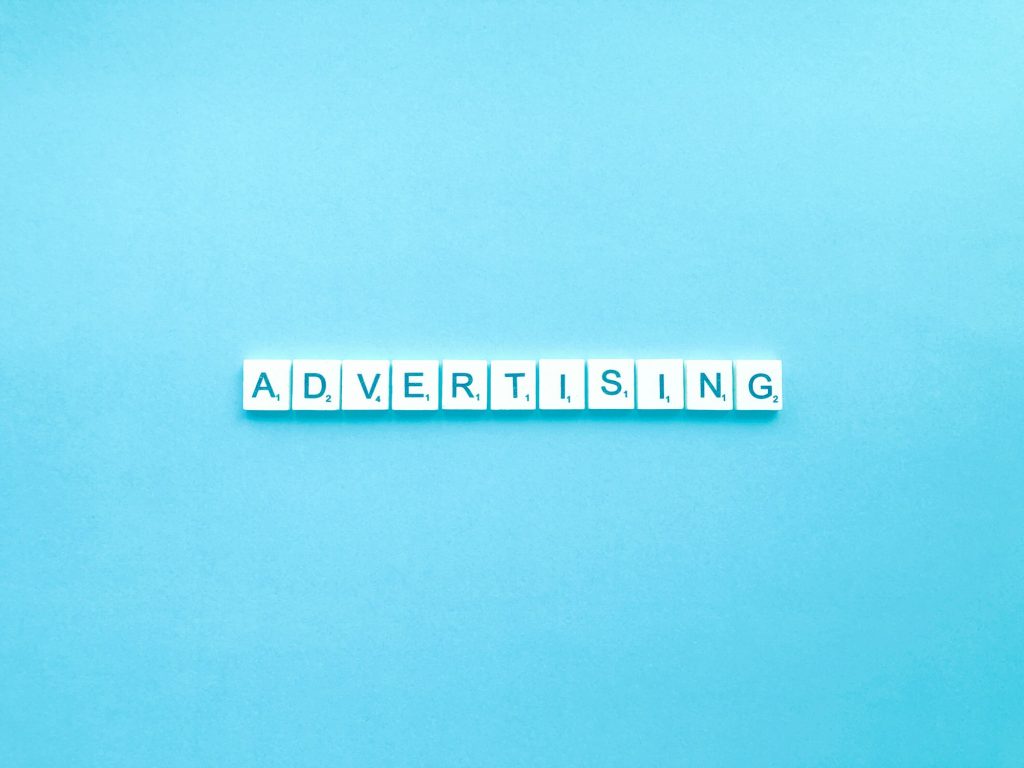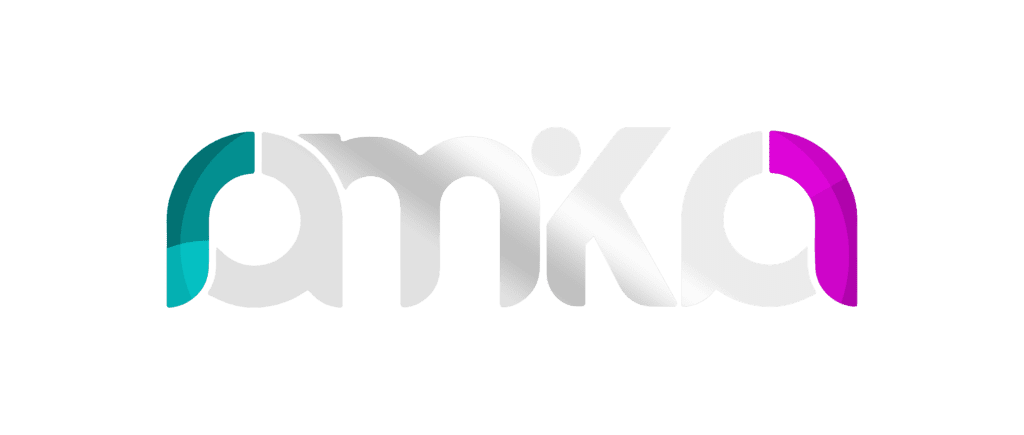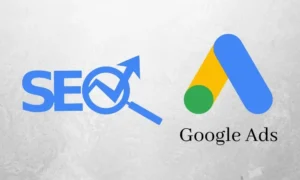instagram marketing vs facebook marketing!

Category:Uncategorized
Publish Date: 2024-02-28 20:46:33
In the dynamic realm of digital marketing, social media platforms stand as colossal pillars, holding the power to pivot the trajectory of brands, big and small alike. Their influence in shaping consumer behavior and brand perception is undebatable. Hence, understanding the nuances of each platform is not just a strategy, but a necessity in today’s digital-first world.
In the labyrinth of social media marketing, navigating the peculiarities of each platform is pivotal. The mantra for success lies in deciphering the distinct language each platform speaks, especially when it comes to the titans of social media – Facebook and Instagram.
Before we start and if you are in rush, this table provides a quick overview of the key marketing differences between Facebook and Instagram. It’s important to note that while they have distinct features, both platforms can be effectively integrated into a comprehensive digital marketing strategy.
Our team also provides specialized social media marketing services. If you want to get more information and get a free consultation, visit the Social Media Marketing Vancouver.
We suggest you also read this article: Best social media platforms for marketing



 If you don’t have a website for your business, you can use our services in this field. For more information, visit Affordable Wed Design Vancouver.
If you don’t have a website for your business, you can use our services in this field. For more information, visit Affordable Wed Design Vancouver.

| Factor | Facebook Marketing | Instagram Marketing | Additional Notes |
| Primary Audience | Broader age range, including older demographics. | Younger demographics, particularly popular with millennials and Gen Z. | Facebook’s diverse audience includes significant representation across various age groups. |
| Content Type | Supports diverse content types: text, images, videos, links, and shared content. | Primarily visual content: images and videos. Limited text and no direct sharing of articles or posts. | Instagram’s focus on visuals makes it ideal for brands with strong visual appeal. |
| Engagement Rate | Lower overall engagement rate compared to Instagram, but a larger user base. | Higher engagement rates, especially for visually appealing content. | Engagement rates can vary by industry and content type. |
| Ad Formats | Wide range of ad formats: Carousel, Video, Image, Slideshow, Collection, Instant Experience. | Focus on visually appealing ad formats: Stories, Photo, Video, Carousel, Collection, IGTV. | Facebook offers more versatility in ad formats, suitable for various marketing goals. |
| User Behavior | Users seek information, news, and community interaction. More comprehensive content consumption. | Users are driven by visual inspiration and trends. Quick, visually-focused content consumption. | Understanding user behavior is key to tailoring content for each platform. |
| Advertising Costs and ROI | Generally lower cost per click but larger audience reach. | Higher cost per click but potentially higher engagement and impact on a targeted audience. | ROI depends on campaign objectives and target audience. |
| Algorithm Focus | Prioritizes content based on user connections, interactions, and engagement. | Prioritizes recent, relevant content; heavily influenced by visual engagement and relationships. | Staying updated with algorithm changes is crucial for content strategy. |
| Analytics and Tools | Detailed analytics available through Facebook Insights and Ads Manager. | Instagram Insights provide analytics, with a focus on engagement metrics and audience demographics. | Utilizing these tools can greatly enhance targeting and campaign effectiveness. |
| Campaign Targeting | More granular targeting options based on a wide range of user data. | Targeting options are streamlined, focusing more on visual appeal and less on text-based content. | Effective targeting is essential for maximizing ad spend. |
| Market Suitability | Suitable for a wide range of markets and industries. Effective for both B2B and B2C segments. | Particularly effective for lifestyle, fashion, food, and other visually-driven industries. Mainly B2C focused. | Consider the nature of the product or service when choosing the platform. |
| Content Lifespan | Longer content lifespan. Posts can remain relevant for a longer period. | Shorter content lifespan. Posts are quickly replaced by newer content. | Strategize content frequency accordingly. |
| Interaction Features | More options for user interaction: comments, shares, reactions. | Likes and comments are the main interaction features. Limited sharing options. | Interaction features can influence the type of content created. |
| Video Content | Supports longer video formats and live streaming. | Focus on shorter, more engaging video content. IGTV for longer videos. | Video strategy should align with platform capabilities. |
| E-Commerce Integration | Advanced e-commerce features like Facebook Shops. | Growing e-commerce capabilities with Instagram Shopping. | E-commerce integration is becoming increasingly important on both platforms. |
| Influencer Marketing | Influencer marketing is present but less dominant than Instagram. | Highly driven by influencer marketing and brand collaborations. | Influencer partnerships can greatly amplify reach and engagement. |
Facebook and Instagram Platforms
Facebook, the vanguard of social connection, has evolved into a marketing behemoth since its inception in 2004. Instagram, a more recent entrant, birthed in 2010, quickly ascended as the zenith of visual storytelling. Their evolution reflects a broader shift in digital communication – from text-heavy narratives to visually-driven content.User Base and Demographics
Diving into the demographics, Facebook’s dominion spans across a diverse age range, casting a wider net in its audience catchment area. Instagram, with its visually appealing ethos, resonates more with the younger cohorts, making it a vibrant hub for trendsetters and influencers.Age Groups and User Preferences
The age divide is stark – Facebook is the go-to for a more mature audience, while Instagram is the darling of millennials and Gen Z. This chasm in user preferences is a critical consideration for marketers aiming to hit the bullseye in audience targeting.Global Reach and Popularity
In terms of global reach, Facebook’s colossal user base of over 2.8 billion dwarfs Instagram’s 1 billion. However, numbers only tell half the story. The popularity of Instagram among the younger demographic makes it a golden goose for brands targeting this lucrative segment. [elementor-template id=”19601″]Engagement and Content Interaction
Engagement Rates
Instagram is often celebrated for its higher engagement rates compared to Facebook. This is particularly significant for brands aiming to build a highly engaged community. Instagram’s visually rich platform encourages more frequent and immediate interactions, such as likes, comments, and shares, especially from younger audiences who are highly active on the platform. This increased engagement is a testament to the power of compelling visuals and concise content, which resonates well with the platform’s user base. On the other hand, Facebook, while having a larger user base, tends to have lower engagement rates per post. However, this does not diminish its value as a marketing platform. The nature of engagement on Facebook can often be more substantive, involving deeper interactions like lengthy comments, shares, and discussions, which are valuable for brands looking for more meaningful engagement with their audience.
Types of Content That Thrive on Each Platform
Instagram’s Visual Dominance: The platform thrives on visually compelling content. High-quality images, engaging videos, and eye-catching graphics rule this domain. Content that is aesthetically pleasing, such as beautiful photography, creative graphics, and short yet impactful videos, tends to perform exceptionally well. Instagram Stories and Reels have also emerged as powerful tools for engagement, offering creative ways to present content in a more dynamic and interactive format. Facebook’s Content Diversity: Facebook’s platform is more accommodating of a variety of content types. This includes longer-form text posts, articles, videos, and curated content. Brands can leverage this to share a broader range of content, from detailed blog posts and articles to updates and announcements. This versatility allows brands to build a more comprehensive content strategy that can include thought leadership, industry news, educational content, and more.User Interaction Patterns
Instagram’s Impulsive Engagement: Interaction on Instagram is often quick and impulsive. Users are more likely to engage with content that is immediately captivating. This platform’s user experience is designed to facilitate rapid consumption of content, leading to swift likes, comments, and shares. The nature of engagement is highly visual and emotive, driven by the compelling aesthetic of the content. Facebook’s Information-Rich Interaction: Facebook users often seek more information-rich content, leading to a different pattern of interaction. Users on Facebook are more inclined to engage in discussions, share their opinions, and connect with content on a deeper level. This can be particularly beneficial for brands that aim to foster a community, engage in customer service, or encourage conversations around their products or services. You can also use the online marketing services Vancouver of our team to grow and develop your business.
Marketing Strategies of Facebook and Instagram
Content Strategy and Format
Facebook vs Instagram Marketing: Facebook’s diverse content strategy enables a multifaceted storytelling approach. Brands can leverage a mix of text, images, videos, and links to craft a narrative that resonates with a wide audience. The platform’s flexibility allows for long-form content, making it ideal for detailed storytelling, educational content, and in-depth discussions. Instagram Marketing vs Facebook Marketing: Instagram demands a focused and visually-driven content strategy. Brands need to communicate their story more succinctly, using compelling imagery, short videos, and engaging captions. This platform celebrates the power of visual storytelling, where creativity and aesthetics take center stage. The emphasis is on creating a visually cohesive and appealing feed that tells a brand’s story at a glance. Suggested article: Seo or social media marketingVisual Appeal on Instagram
Instagram’s marketing thrives on its ability to captivate users with aesthetically pleasing visuals. This platform is designed for brands that can convey their message through powerful imagery or short, engaging videos. The quality of the visual content is paramount, as it needs to instantly grab the user’s attention in a highly competitive and fast-paced environment. Instagram Stories, Reels, and IGTV offer varied formats for creative expression, each requiring a unique approach to content creation.Text and News Sharing on Facebook
Facebook excels in text-rich content sharing, making it a prime platform for news dissemination, thought leadership, and detailed storytelling. Brands can leverage Facebook to share blog posts, articles, and updates that require more textual depth. The platform’s design supports longer reads and provides features like Instant Articles to enhance user experience with fast-loading, immersive content.Advertisements and Promotions
In the difference between Facebook and Instagram marketing, advertising strategies diverge significantly. Facebook’s advertising platform offers a myriad of options, from traditional newsfeed ads to more interactive formats like Instant Experiences. Its robust targeting capabilities, backed by extensive user data, allow for highly targeted campaigns. Instagram’s advertising is visually oriented, relying on the platform’s native aesthetic appeal. Influencer partnerships are particularly effective here, leveraging the credibility and reach of popular Instagram personalities to promote brands in a more organic and engaging manner.Ad Formats and Capabilities
Instagram Marketing vs Facebook Marketing is distinct in their ad format offerings. Instagram’s ad formats, such as Stories and Carousel ads, are designed to be visually engaging and immersive, capitalizing on the platform’s visual-centric user experience. Facebook, with a wider array of ad formats, offers more versatility, accommodating various marketing objectives from brand awareness to lead generation. Ramikar team also provides SEO services. Visit the Vancouver SEO services.
Targeting Options and Customization
The targeting capabilities of each platform reflect the difference between Facebook and Instagram marketing. Facebook’s sophisticated targeting options allow brands to delve deep into demographics, interests, behaviors, and more. Instagram, while benefiting from Facebook’s data, tends to have a more straightforward approach, focusing on demographics, interests, and location, making it easier for brands to reach a visually-engaged audience.Audience and Reach
Demographic Differences and Marketing Implications
The demographic divide is a crucial factor in Facebook vs Instagram marketing. Facebook’s universal appeal provides a fertile ground for brands targeting a broader audience spectrum. Instagram’s youthful energy makes it a hotbed for brands aiming to connect with a younger, trend-savvy audience.Unique Audience of Each Platform
Grasping the unique audience persona of each platform is like deciphering a secret code to marketing success. Facebook’s audience seeks connection and information, while Instagram’s users are in pursuit of inspiration and visual storytelling. Suggested content: Instagram marketing strategy for small business If you don’t have a website for your business, you can use our services in this field. For more information, visit Affordable Wed Design Vancouver.
If you don’t have a website for your business, you can use our services in this field. For more information, visit Affordable Wed Design Vancouver.
Advertising Costs and ROI
Cost-Effectiveness of Campaigns on Each Platform
In evaluating Instagram marketing vs Facebook marketing, cost-effectiveness is a key consideration. Instagram generally demands a higher cost for engagement, given its high-impact visual content. Facebook, with its broader reach and diverse ad formats, often offers more cost-effective solutions.Analyzing Return on Investment
The ROI conundrum in Facebook vs Instagram marketing hinges on the nature of the campaign and the targeted audience. Instagram can yield a high ROI for visually-driven campaigns, especially in lifestyle and fashion sectors. Facebook’s ROI is often realized through its extensive reach and detailed targeting capabilities.Budget Allocation
Deciding where to allocate budget in the difference between Facebook and Instagram marketing depends on campaign objectives and target demographics. A brand seeking immediate visual impact might lean towards Instagram, while one aiming for a wide-ranging, information-centric campaign may find Facebook more suitable.Technical Aspects and Analytics
Understanding the algorithms of Facebook and Instagram is crucial for marketers, as it directly impacts how content is displayed and engaged with by the audience.Algorithm Differences and Content Visibility
Facebook’s Algorithm: Facebook’s algorithm is designed to prioritize content that fosters meaningful interactions. It values user engagement metrics like comments, shares, and reactions, particularly those that indicate deeper user involvement, such as long comments or sharing with personal commentary. The algorithm also considers user preferences and past activity, displaying content that aligns with their interests and engagement patterns. This means that for marketers, creating content that encourages user interaction and discussion is key to increasing visibility on Facebook. Instagram’s Algorithm: Instagram’s algorithm, while also considering user engagement, places a stronger emphasis on timeliness and relationships. It prioritizes recent posts, making the platform more fast-paced. Content from accounts that users interact with frequently – through likes, comments, and direct messages ,is more likely to appear higher in their feeds. Therefore, on Instagram, the focus for marketers should be on regularly posting engaging content and building a strong rapport with their audience.
Analyzing Platform Analytics for Strategic Decisions
Both platforms provide robust analytics tools, which are essential for marketers to understand their audience and measure the effectiveness of their content and campaigns. Facebook Analytics: Facebook offers detailed insights through tools like Facebook Insights and Ads Manager. These provide a wealth of data, including page views, engagement rates, audience demographics, and ad performance metrics. Marketers can use this data to understand what types of content resonate with their audience, when to post, and how to refine their ad targeting for better ROI. Instagram Analytics: Instagram Insights offers analytics for business accounts, giving valuable data on post-performance, engagement rates, and audience demographics. It also provides insights into how users interact with Stories and IGTV. This data is crucial for marketers to understand which types of visual content are most effective and when their audience is most active on the platform.Tools for Tracking and Managing Campaigns
In a data-driven marketing landscape, leveraging tools for campaign tracking and management is essential for both strategic planning and real-time decision-making. Facebook Business Manager: This tool is a one-stop shop for managing ad accounts, pages, and the people who work on them. It allows marketers to track ad performance, manage audience targeting, and gain insights into campaign metrics, all from a single interface. Instagram Insights and Third-Party Tools: Besides Instagram’s native insights, there are various third-party tools available that offer advanced analytics and campaign management features for Instagram. These tools often provide more detailed analytics, including follower growth, best posting times, and competitor analysis, which are invaluable for optimizing Instagram marketing strategies.User Behavior and Trends
User behavior on Facebook and Instagram dictates the strategic direction for marketers. The impulsive, visually-driven behavior on Instagram calls for eye-catching content, while Facebook’s more deliberate user interaction patterns demand engaging, information-rich content. Staying abreast of the latest trends is crucial in the ever-evolving landscape of Facebook vs Instagram marketing. From the rise of ephemeral content on Instagram to the increasing importance of Facebook groups, these trends can significantly influence marketing strategies. Forecasting the future in the dynamic world of social media marketing involves anticipating shifts in user preferences. Augmented reality, AI-driven personalization, and increased privacy concerns are likely to shape future strategies on both platforms. We suggest you also read this article: Best places to advertise your small businessBest Practices for Each Platform
Do’s and Don’ts for Facebook Marketing
Do’s:- Engaging Storytelling: Create content that tells a story, connects emotionally, or shares interesting information. Storytelling can significantly boost engagement and recall.
- Diverse Content Types: Utilize the range of content types available on Facebook – from videos to polls, live streams to stories. This variety can cater to different audience preferences and keep your page dynamic.
- Active Community Management: Promptly respond to comments and messages. Engaging with your audience helps build a community and enhances brand loyalty.
- Avoid Overt Sales Pitches: Hard selling can be off-putting on social media. Instead, focus on adding value to your audience’s experience.
- Don’t Neglect User Comments: Ignoring user interactions can harm your brand’s reputation and engagement rates. Regular interaction is key to maintaining a positive community environment.
Instagram Marketing Tips for Success
Do’s:- High-Quality Visuals: Given Instagram’s focus on aesthetics, high-resolution and visually appealing images or videos are essential.
- Consistent Branding: Maintain a consistent aesthetic and tone in your posts to strengthen brand recognition.
- Leveraging Instagram Stories: Utilize Stories for more immediate, behind-the-scenes, or time-sensitive content.
- Avoid Overcrowding Posts with Hashtags: While hashtags are important for visibility, too many can look spammy and detract from the message.
- Don’t Ignore Influencer Partnerships: Collaborating with influencers can expand your reach and lend credibility to your brand.
Integrating Both Platforms in a Unified Strategy
- Understand Audience Overlaps and Differences: Recognize the shared and unique aspects of your audience on each platform. This understanding can guide you in tailoring your messaging appropriately.
- Tailor Content While Maintaining a Cohesive Brand Voice: While the content can be different on each platform, ensure your brand voice and core message remain consistent.
- Cross-Promote Strategically: Use each platform to complement the other. For instance, tease Instagram content on Facebook or vice versa to drive traffic between them.
- Leverage Platform-Specific Features for Broader Campaigns: Use the unique features of each platform to enhance your campaign. For example, Facebook’s detailed targeting can be used for precision, while Instagram’s visual appeal can be used for broader brand awareness.
Conclusion
In summary, while there are overlapping elements in Facebook vs Instagram marketing, each platform possesses unique strengths and audience behaviors. Facebook offers breadth and versatility, while Instagram thrives on visual engagement and a younger demographic. The decision on which platform to focus should be guided by the brand’s target audience, campaign objectives, and content style. A balanced approach, leveraging the strengths of both platforms, is often the most fruitful. Looking ahead, the landscape of Facebook vs Instagram marketing will continue to evolve. Marketers need to stay agile, adapt to changing trends, and continuously refine their strategies to harness the full potential of both platforms. [elementor-template id=”19628″] FAQs Is Facebook or Instagram better for marketing? Depends on target audience and campaign goals; Facebook offers broad reach and diverse content; Instagram excels in visual engagement. Which platform offers better ROI for advertising? Varies by campaign; Facebook is cost-effective for a broad audience, Instagram for high-impact visual campaigns. Can the same marketing content work on both platforms? Not always; tailor content to each platform’s strengths and user preferences for maximum impact. How important are demographics in choosing between Facebook and Instagram? Extremely important; understanding audience demographics is key to effective platform-specific strategies.Recent Articles:

Video Marketing Canada: Best Strategies for 2025
6 months ago
5 min 25 sec read

Photography Services Canada: For Web & Social Media Use
6 months ago
5 min 2 sec read

Logo Design Canada: Create a Logo That Truly Stands Out
6 months ago
4 min 38 sec read
Let us help !
Related Posts
Comments
0
0
votes
Article Rating
Subscribe
Login
0 Comments
Oldest
Newest
Most Voted
Inline Feedbacks
View all comments






